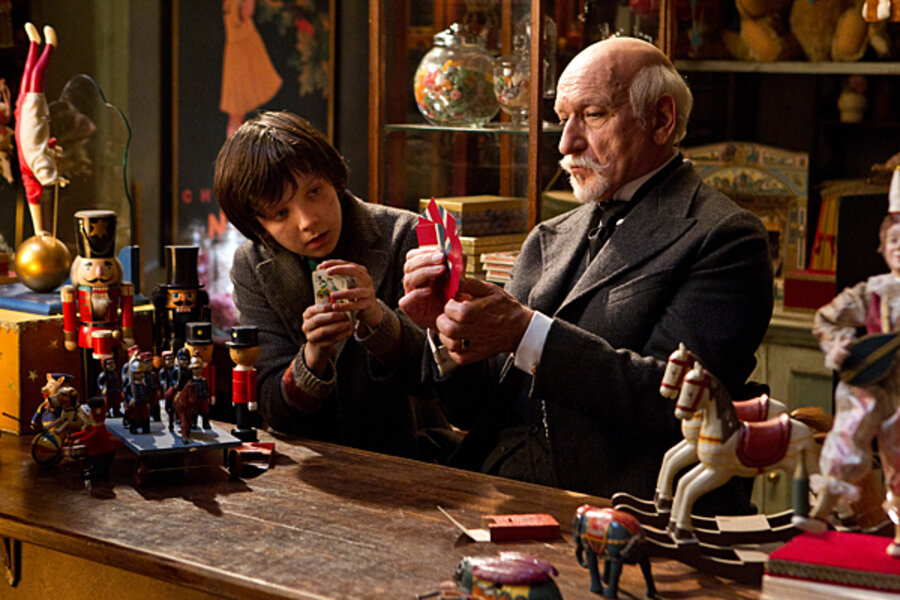Martin Scorsese's 3-D 'Hugo': movie review
Martin Scorsese’s 3-D “Hugo” is, at least on the surface, an improbable choice for the director best known for films like “Taxi Driver” and “Raging Bull.” Based on Brian Selznick’s acclaimed and richly illustrated children’s book “The Invention of Hugo Cabret,” with a screenplay by John Logan, it tells the story of the eponymous young orphan (Asa Butterfield) in 1930s France who maintains, in secret, the clocks at a major train station in Paris.
With the death of his father (Jude Law, seen in flashbacks) and his alcoholic uncle (Ray Winstone), 12-year-old Hugo struggles to survive poverty and hunger while steering clear of the martinet inspector (Sacha Baron Cohen) who prowls the station and wants to put the boy in an orphanage. He also labors to fix a life-size automaton that, once repaired, might transmit a message from his father.
Hugo’s biggest nemesis, at least for a while, is a bitter old man (Ben Kingsley) who runs a toy shop in the station. Through a friendship with the man’s goddaughter Isabelle (Chloë Grace Moretz), also a station habitué, Hugo finally strikes a connection with the sourpuss – who turns out to be none other than Georges Méliès, one of the great pioneers of movies at the turn of the 20th century but now a forgotten relic. It is their shared love of magic – of bringing things to life – that animates both their friendship and this movie.
There are several reasons why, despite outward appearances, “Hugo” is a more personal film than one might have anticipated from Scorsese (who, at 69, has a 12-year-old daughter). He has demonstrated in the past, especially in “Kundun,” his underrated film about the boyhood of the 14th Dalai Lama, a strong affinity for childhood wonderment. Also, Scorsese’s passion for film history and preservation is given full play here with the Méliès material.
With all of this going for it, “Hugo” is nevertheless an odd mixture: a deeply personal impersonal movie. The huge apparatus of Dante Ferretti’s production design, extraordinary as it is, along with the elaborate visual effects, are sometimes as much an impediment as a spur to the film’s flights of fancy. There’s a heaviness to this carefully appointed production, which, at 130 minutes, feels overlong. Scorsese fills out the train station sequences with too much overbearing scurrying and bustle. And Butterfield, as adept as he is, doesn’t quite have the transcendence to lift Hugo’s plight into the fantastical realms that Scorsese was reaching for.
But what comes through anyway, despite it all, is Scorsese’s childlike fascination with movies. His love of Méliès, whose 1902 “Trip to the Moon” is iconic, is all of a piece with his adoration of the movie medium itself. This sort of ga-ga worship might be hard to take with most other directors, but Scorsese is no journeyman. He’s a major artist who, in trying to stretch himself, has attempted valiantly to put more of himself into this children’s fable than was apparent in several of his more highly touted or commercial works (like “The Departed” and “Shutter Island,” which had a been-there-done-that quality).
The 3-D effects in “Hugo,” while not as boundary-breaking as one might have hoped for from Scorsese, are still way ahead of the curve. Unlike most directors who use the visual process as a gimmick, Scorsese brings us into the imagery with an understated elegance.
“Hugo” is a mixed bag but one well worth rummaging through. Grade: B+ (Rated PG for mild thematic material, some action/peril, and smoking.)





